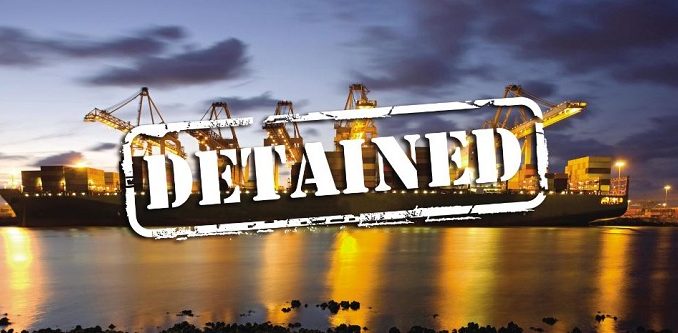Inspection results

Reporting
If no deficiencies are found during the inspection, the PSCO will issue a ‘clean’ inspection report (Form A) to the master of the ship.
In case deficiencies have been identified, the inspection report will include deficiencies found in Form B. The report indicates any follow-up actions to be taken to rectify the recorded deficiencies and includes the relevant Convention reference. Next, the particulars of the ship and the inspection results will be recorded in the database. The PSC Officer will issue an inspection report (Form A and B) to the master of the ship.
If the deficiencies found are serious the inspector may issues a detention order.
Below both the nature of deficiencies are explained and the administrative process regarding a detention.
Deficiencies
During an inspection, the PSC inspector may identify one or more deficiencies and include these in the PSC inspection report. Each deficiency has a unique code. These codes are published on:
List of Paris MoU deficiency codes | Paris MoU
The inspection report also specifies when the deficiency should be rectified. The applicable convention reference should be included in all deficiencies.
With the deficiency there will also be an “action taken” specified. The list below contains the most frequently used “action taken”:
Rectified (code 10)
Used for a deficiency which has been rectified and verified by a PSCO, this code applies only when a deficiency has been rectified at the time of the inspection.
To be rectified within 14 days (code 16)
Used for a deficiency which, in the PSCO’s professional judgement, is not serious enough to require urgent rectification or verification by a PSCO before departure.
This action taken sets a maximum limit of 14 days but it is left to the master’s responsibility to rectify the deficiency as soon as necessary and reasonable within that period.
To be rectified before departure (code 17)
Used for a deficiency which, in the PSCOs professional judgement, should be rectified before the ship sails but is not serious enough to warrant detention, or/and can reasonably be rectified before the ship sails.
If the ship is not detained, it is left to the master’s responsibility to rectify the deficiency before departure. No verification by a PSCO is required.
If a deficiency, which is to be rectified before departure, is verified by a PSCO as rectified before the ship departs it should be recorded as rectified.
Safety management audit by the Administration (code 19)
This Code is used if a safety management audit by the Administration is required before departure of the ship. Deficienc(y)(ies) marked ISM is (are) objective evidence of a serious failure, or lack of effectiveness, of implementation of the ISM Code.
Corrective action taken on the ISM system (code 21)
This Code is recorded when the Company is required to take corrective action on the ISM system within 3 months. Deficienc(y)(ies) marked ISM is (are) objective evidence of a failure, or lack of effectiveness, of the implementation of the ISM Code. The ship will be eligible for re-inspection after 3 months from the final date of the inspection report.
Grounds for detention (tick box, on the inspection form)
Used for a deficiency that is serious enough that it should be rectified before departure. The PSCO shall review the rectification before the ship may continue its voyage.
In the case that the deficiency is related to a statutory certificate, issued or endorsed by a Recognized Organization (RO), it should be related to that Recognized Organization (also indicated by a tick box on the inspection form).
The requirements for this should be in accordance with PSCC Instruction on Criteria for Responsibility Assessment of Recognized Organizations.
Accidental Damage (tick box, on the inspection form)
Used only for a deficiency for which special criteria could be taken into account in case of accidental damage. The criteria are specified in Section 3.5 of the Memorandum is applicable. These special criteria can be used as a “waiver” for possible deficiencies, if applicable.
Detentions

The PSCO will exercise professional judgment in determining whether to detain the ship until the deficiencies are rectified or to allow it to sail with certain deficiencies that do not present an unreasonable risk to the safety, health or the environment, having regard to the particular circumstances of the intended voyage. When a PSCO considers a detention, he/she will apply the following criteria:
.1 Timing: Ships, which are unsafe to proceed to sea, will be detained upon the first inspection irrespective of the time the ship will stay in port;
.2 Criterion: The ship will be detained if the deficiencies on a ship are sufficiently serious to merit a PSCO returning to the ship to be satisfied that they have been rectified before the ship sails.
A PSCO is not obligated to return to ship in every case. The Authority will verify one way or another, preferably by a further visit, that the deficiencies have been rectified before departure.
More detailed information on detentions and actions taken by the port State can be found here.
Appeal
The flag State or Recognized Organization may appeal a detention with the port State.
Please review the applicable procedure
